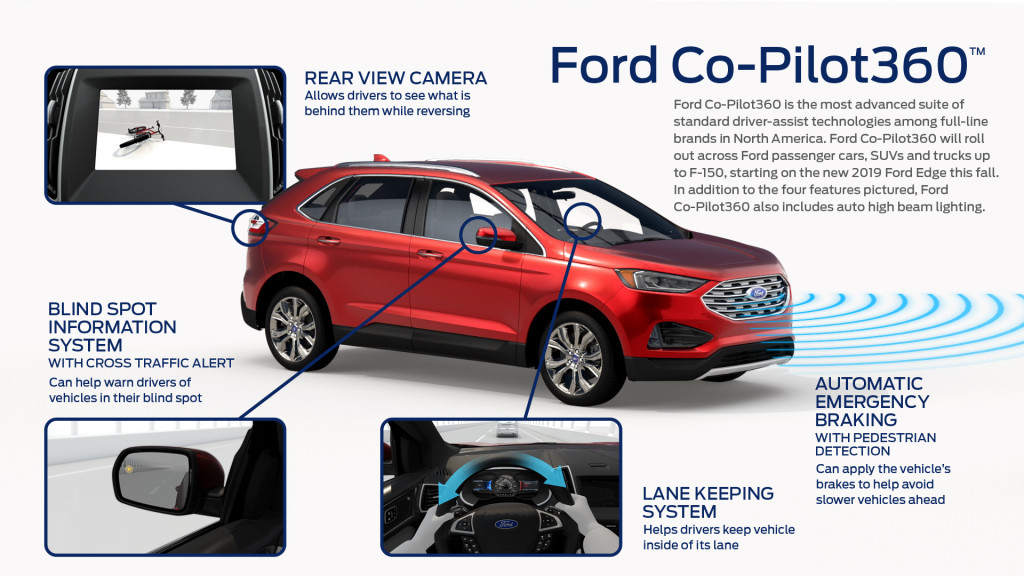Ford will join a handful of other automakers in making many active safety features standard through a suite of technologies bundled in what the automaker calls Co-Pilot360. The automaker announced on Thursday that the 2019 Ford Edge and Edge ST to be released this fall will be the first vehicles to feature Co-Pilot360.
The system will include forward collision warning with automatic emergency braking and pedestrian detection, blind-spot monitors with rear cross-traffic alerts, active lane control, and automatic high beams. A rearview camera is also included, but all Ford vehicles include the safety feature as of this year ahead of federal regulations.
Ford Co-Pilot360 active safety systems
Ford's Co-Pilot360 rollout will be rather quick as the automaker confirmed more than 90 percent of its vehicles will feature the active safety features by 2020.
That includes vehicles up to and including the F-150. Commercial trucks and vans received an asterisk in the announcement; Ford didn't confirm if the entire package of safety systems would grace every heavy-duty truck and commercial van, such as the E-Series vans and F-Series trucks bigger than the F-150. The safety systems will likely become optional on these vehicles. In fact, the automaker said by 2020, vehicles that might not typically offers these systems, like the E-Series, F-650, F-750, and F59 chassis, will arrive with "available" active safety systems.
In the future, Ford plans to add new features to its Co-Pilot360 package. For example, the company announced a reverse emergency braking system will come to some Ford models in 2019. The system helps prevent drivers from reversing into an object and can help minimize the impact, should one occur.
In addition, Ford will invest $500 million over the next five years to develop more advanced driver-assist and safety technologies.
Thus far, Toyota has adopted a similar strategy, but Ford pointed out that Toyota's standard Safety Sense system doesn't include blind-spot monitors with rear cross-traffic alerts. However, Toyota's system does have adaptive cruise control and Ford's does not. Both systems, however, are in the best interest of safety for their buyers.